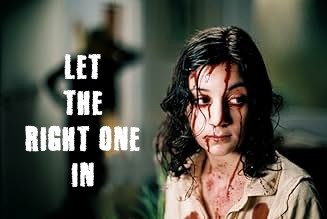Few vampire films dare to blend gothic horror with aching vulnerability like Let the Right One In (Låt den rätte komma in). Directed by Tomas Alfredson and based on John Ajvide Lindqvist’s novel, this Swedish masterpiece reimagines vampire lore as a poignant coming-of-age story set against the bleak, snow-covered suburbs of 1980s Stockholm. Equal parts chilling, romantic, and brutally honest, the film swaps fangs-and-capes clichés for raw emotional stakes. Let’s step into the frostbitten world of Oskar and Eli—a friendship drenched in shadows and scarlet.

The Plot: A Bullied Boy and the Vampire Next Door
Oskar (Kåre Hedebrant), a lonely 12-year-old, endures relentless bullying at school and neglect at home. His life changes when Eli (Lina Leandersson), a pale, androgynous girl, moves into his apartment complex. Eli only appears at night, smells strange, and refuses to enter rooms uninvited. Despite her oddities, the two form a tender bond, sharing secrets and Morse code messages through their apartment walls.
But Eli harbors a dark truth: she is a centuries-old vampire, trapped in a child’s body and dependent on blood to survive. Her “father,” Håkan, murders locals to feed her, but his botched attempts force Eli to hunt alone. As Oskar’s bullies escalate their cruelty, Eli’s protectiveness grows—culminating in shockingly violent acts that blur the line between loyalty and monstrosity.
The film’s haunting climax unfolds in a frozen swimming pool, where Oskar confronts his tormentors, and Eli’s true nature is laid bare. Their relationship, caught between innocence and horror, asks: Can love survive when it demands blood?
Why Let the Right One In Redefined Vampire Horror
1. Atmosphere as a Character
The icy Swedish setting—endless nights, muffled snowscapes, and Soviet-era apartments—mirrors Oskar and Eli’s isolation. Every breath hangs in the air, every footstep crunches with menace.
2. Subverting Vampire Tropes
No capes, no garlic: Eli’s vampirism is grounded in painful realism. She smells like death, vomits after feeding, and follows the “invitation rule” (she can’t enter homes uninvited).
3. The Horror of Bullying
Oskar’s tormentors are as terrifying as any monster. The film parallels childhood cruelty with vampiric violence, suggesting both are forms of predation.
4. Lina Leandersson’s Hypnotic Performance
Leandersson’s Eli is alien yet achingly human—her whispered “I’m not a girl” lingers long after the credits.
5. The Pool Scene: A Masterpiece of Tension
Set to Johan Söderqvist’s minimalist score, the climactic attack is both graphic and poetic, blending underwater serenity with carnage.
Behind the Scenes: Frostbite and Forbidden Blood
- Cold Realism: Actors endured -30°C (-22°F) temperatures. Hedebrant’s shivering in the pool scene was genuine.
- Eli’s Voice: Two actors dubbed Leandersson’s lines—a girl for soft scenes, a boy for growls—to heighten her ambiguity.
- Controversial Casting: Critics debated the implicit pedophilia in Håkan’s relationship with Eli, though the novel clarifies he’s a former victim groomed into servitude.
Legacy and Influence
- Inspired the American remake Let Me In (2010) and shows like Stranger Things (Eli’s influence on Eleven’s character).
- Reignited interest in slow-burn, atmospheric horror over jump scares.
- Ranked among Empire’s 100 Best Films of World Cinema.
Why It Still Resonates
Let the Right One In isn’t about vampires—it’s about outsiders finding solace in darkness. Its horror lies in asking: Would you abandon humanity to escape loneliness?
Engage With Me!
Team Eli or Team Oskar? Do you see their bond as tragic love or toxic dependency? And what’s your take on the ambiguous ending?
Love atmospheric horror? Check out my analysis of Rosemary’s Baby (1968) or my list of Underrated International Horror Gems.


